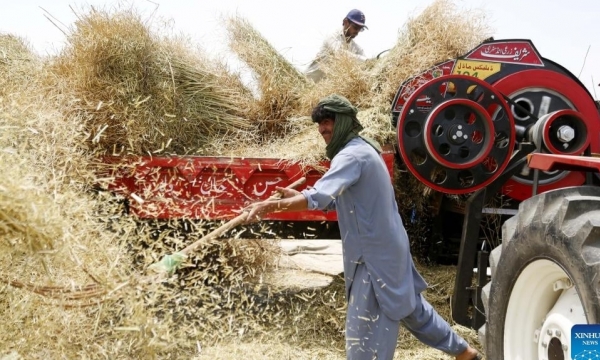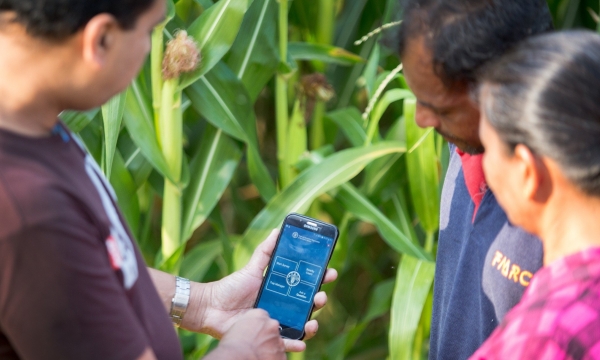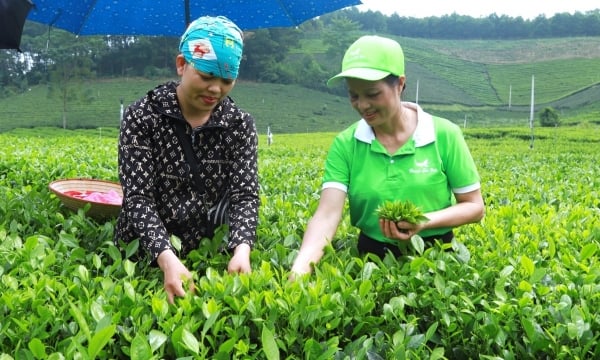May 14, 2024 | 08:05 GMT +7
May 14, 2024 | 08:05 GMT +7
Hotline: 0913.378.918
May 14, 2024 | 08:05 GMT +7
Hotline: 0913.378.918
The Kinsho system operates like the inverse of an outdoor cafe heater, cooling several tables per unit without using any electricity.

Green Kinoko will soon begin outdoor trials at major cafes in Tel Aviv, to prove the system and gather performance.
The secret: liquid nitrogen. Standard tanks holding this frigid liquid at -196 °C (-321 °F) are loaded into the coolers, and when they're switched on, the liquid is slowly released. It expands rapidly to nearly 700 times its liquid volume as it becomes a gas, and the coolers harness the energy in this expansion through a mechanical engine, using it to blow nitrogen gas out at a much more palatable -10 °C (14 °F).
That's cold enough to chill a few outdoor tables quickly and quietly, without asphyxiation
turning anyone into a T1000-style shattering ice statue. It's much more environmentally friendly than an air conditioner – at least, where it's used – since it uses no mains power and doesn't blow hot air out somewhere else. And nitrogen makes up about 78% of the ambient air, so it's not toxic and should be safe in an outdoor environment.
Green Kinoko (an oddly Japanese name for a decidedly un-Japanese company) pitches the idea as an affordable, clean, quiet, effective, mobile, untethered and aesthetically pleasing alternative to AC units that works on a similar model to an outdoor heater. The liquid nitrogen tanks will need replacing every 7-10 days, depending on how hot it is outside and how hard you're running them.
"Usually, the cost of the nitrogen is about €50-60 (US$50-60) per tank," Green Kinoko's Moran Goldberg tells New Atlas. "Today, it's mostly produced as a byproduct when hospitals and medical services make pure oxygen. Of course, there's a logistics part of the equation we have to take into account in each country as well, but it's not going to cost more than the existing solutions. As far as a restaurant or venue is concerned, the cost of owning and running an outdoor heater is what we're benchmarking."
The company will have more data on nitrogen consumption, overall effectiveness and the experience of sitting near one of these machines within a few weeks, says Goldberg. "We're going to run a pilot in the first or second week of September," she tells us, "in one of the biggest cafés in Tel Aviv, and we'll be sharing some of the results and information about the trial."
The Kinsho system has been under development for two and a half years, and at this stage the company has built 12 prototype units for use in the pilot trials. With enquiries already pouring in from at least 40 different countries, Green Kinoko is preparing to gear up for serious volume production. "I can't say which quarter," says Goldberg, "but I assume by mid-to-late 2023, we'll have it ready for the mass market. At this stage, we're looking for an investment to start production."
The last eight years have been the eight hottest years since modern record-keeping began in 1880, according to NASA, and temperatures are rising steadily decade to decade, along with extreme weather events like the blazing heatwaves that have scorched Europe, Asia and the United States. Existential uncertainty aside, outdoor cooling is going to become a bigger and bigger necessity over time, and relatively benign solutions like this could become very valuable.
That's assuming they scale well, and there are sufficient liquid nitrogen supplies available for mass adoption in a given region. And before we declare this a green cooling system, the nitrogen would have to be distilled using green electricity. What's more, there are definite safety and materials handling concerns here; liquid nitrogen can cause extreme cold burns, explosions and even asphyxiation if improperly handled, so these units will need to be treated with care.
(Newatlas)

(VAN) Food prices have risen by 0.6% in April compared to March 2024.

(VAN) Rains soaking parts of the Plains this month added critical moisture to a hard red winter wheat crop poised to rebound from back-to-back drought years.

(VAN) Global animal feed production remained steady in 2023 at 1.29 billion metric tonnes (mt), a slight decrease (0.2%) of 2.6 million mt from 2022’s estimates, according to the 2024 Agri-Food Outlook.

(VAN) In Pakistan's eastern Bhakkar district, farmers were left in awe as they witnessed the newly imported oilseed harvesters from China efficiently and briskly carrying out their tasks.

(VAN) How innovation contributes to safeguarding the health of plants and our planet takes centre stage

(VAN) USDA on Friday forecast farmers this spring are planting what will become a 14.86-billion-bushel corn crop and a 4.45-billion-bushel soybean crop.

(VAN) The 2024 Tea Festival will be organized by Dai Tu district (Thai Nguyen province) in early May with many unique contents and programs.